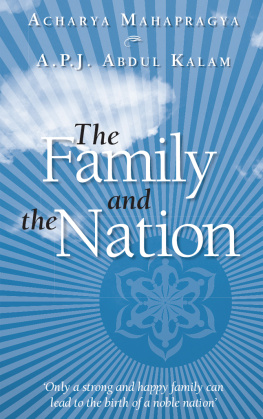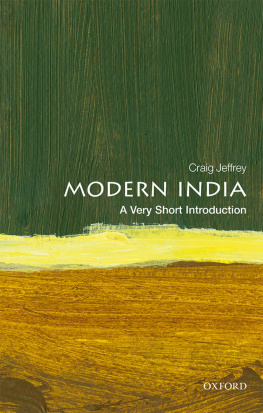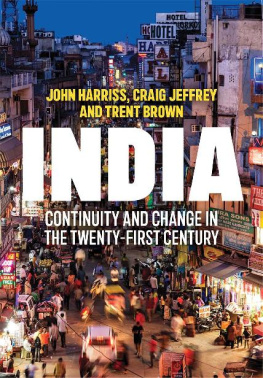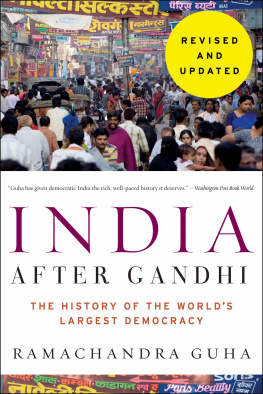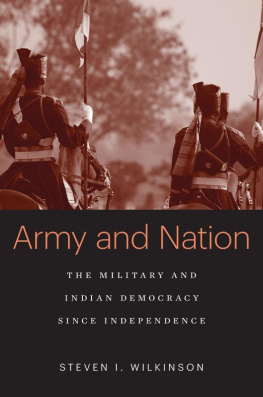Table of Contents
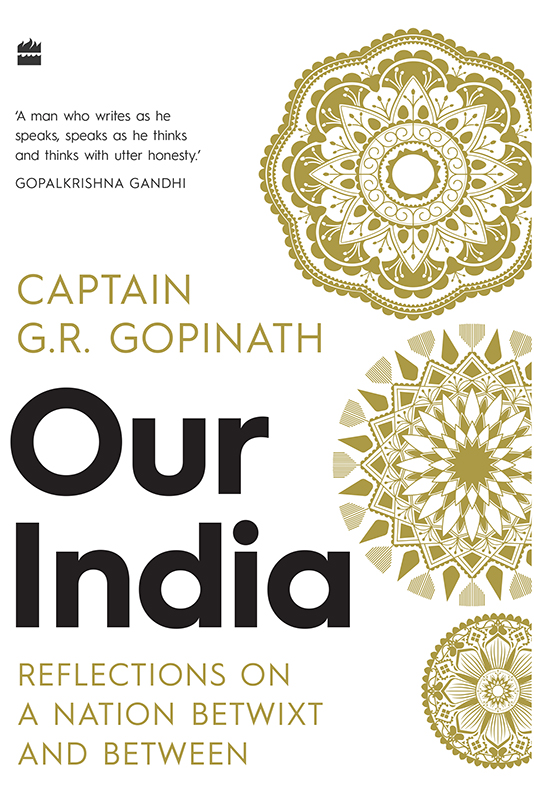

To all the faceless farmers, soldiers in forbidding and remote areas, small entrepreneurs, migrant and health workers toiling in the shadows, who are the true engine of the economy and backbone of the nation.
Contents
W hen, over six decades ago, I was at school, I found most of my textbooks a burden to bear and a chore to study. With one exception: Minoo R.Masanis Our India. First published in 1940, when its author was of the socialist persuasion, the book sold 500,000 copies. It was reprinted in 1953, by which time the world had been through World War II and the India that Masani had written about in 1940 had been through a trauma Partition, and a triumph Freedom. It was a book for children, essentially, but grown-ups profited from its carefully presented facts and figures about India, her land and its resources, her people, and their problems. And, in the 1953 edition, which we read at school, it suggested solutions, clearly but gently. And in a new preface for the new edition, the author said with pardonable confidence: Our India may claim that it has played a small part as a pioneer in making India planning-minded and in preparing the way for the Five-Year Plan on which the country is now launched. The dream of yesteryear is thus on the way to becoming reality. The new edition retained the illustrations by C.H.G.Moorhouse in the original. I remember those illustrations even after all the intervening years have dimmed many recollections and dullened many a school-day memory.
Reading the pages of Capt. Gopinaths manuscript for the book with the same alluring title, I thought I would Google Masanis book to refresh my recollection of the book, and lo, there it was, available online, page after page, drawing after drawing, exactly as I had known it in school. All the words came ringing back, as did the sketches, each character in it, each line and shade, dusting time off my brain. But I also found in the preface now, what I as a school kid had glossed over: the authors handsome acknowledgment of other authors and books, which included Wadias Geology of India, Ram Manohar Lohias India in Figures, Hivale, and Elwins Songs of the Forest. Among the individuals he acknowledged were the economist Professor M.L. Dantwala and the poetess Sarojini Naidu for her encouragement and interest.
Capt. Gopinaths Our India, is an altogether different kind of book. It is meant for study and reflection by mature citizens of India and beyond. But it shares with its namesake of nearly seventy years ago this: It describes realities with great accuracy, with veracity. In other words, the truth. And it does so not to defend or to lament, not to justify or to offend but to suggest amelioration, rectification, redemption. And where the matter may be said to be out of hand, to say as much but without the feeling that can be best expressed with the Tamil exclamation Ayyo! a cry of hopelessness. Capt. Gopinath, like Minoo Masani, gives us nuggets from the writings of great authors, Indian and non-Indian. He does so with the same ease with which a weaver of Kanchipuram silk working on his loom introduces into the warp strands of glittering brocade, organically, and integrally to enrich the weave. And yet, in a remarkable facet of his style, he does so without making the quotations or references look like foreign matter. They flow into the narrative as gently as the gleaming gold does in the Kanchipuram yarn.
Not many connected with flying and flying machines can write with Capt. Gopinaths flair. But no one, I am sure, can write about the Tatas great date with flying, bringing in Christopher Marlowe and Walt Disney into the proceedings. Or on his own experience of flying a small nine-seater Swiss Pilatus aircraft from Cape Town, South Africa to Bombay, bringing right into the story, nothing more different and yet nothing more fitting than Charles Dickens Oliver Twist. His narrations on matters as starkly contemporary as lockdowns and suchlike have William Shakespeare and Napoleon Bonaparte, Bertrand Russell and Adolf Hitler, Albert Camus, and Josef Stalin populate them.
This book is a compilation of the writings of a highly widely-read man who writes as he speaks, speaks as he thinks, and thinks with utter honesty. A reader of non-fiction prose cannot wish for more. If like classical Indian music, quality writing has to have a rasa, then Capt. Gopinath is the rasa of Ananda. There is discernible through the pages of the compilation a smile, sometimes wistful, sometimes playful, but not for a moment scornful. It has the humour of the knowing innocent. The life-sketch of R.K.Laxman is the Prince of the book. It not just smiles and makes the reader do so but crackles with laughter, of the truest Laxman kind. If not the highest, then surely one of the truest forms of it is that which is aimed at oneself. Gopinaths descriptions of himself employ the sharpest witticisms. To write on serious and even grave matters without taking oneself seriously is a rare and redemptive gift.
Coming through rifts in the happy cloud of Capt. Gopinaths sensibility is a beam of pathos. Capt. Gopinaths essay on the late Coffee Caf Day Siddhartha is a profoundly moving document. It is no part of a forewords remit to give away the contents of the book. But I have not been able to refrain from parting the curtain over some of the essentialities of its pages. I have done so with concern over the human condition which is at the core of the authors writing. He writes as a soldier and as a patriot but as one who does not flinch from speaking the bitter truth about us as a people and as Indians.
I do not doubt that like its predecessor namesake, this book will have a salience well beyond the year of its first publication and be turned to for its very distinct qualities.
Capt. Gopinaths Our India is a work of, and for the small truths of life that go into the making of that capital letter which so resembles Christs Cross T.
Gopalkrishna Gandhi
Bengaluru
24 April 2022
C apt. GR Gopinath is full of surprises; few would have expected a former army captain to be a political candidate for elected office, a serial entrepreneur, a sericulturist, an aviation pioneer, and an author to boot. And now this once-and-(maybe)-future entrepreneur has emerged as an interesting voice in the media, commenting on a variety of issues with the same panache he brought to his best-known business venture, Air Deccan. As you will discover when you go through the pages of this collection of opinion pieces, published over the years in a variety of media outlets, he is a gifted storyteller, he offers business insights when you dont expect them, and writes with the conviction of someone who speaks his mind. What he offers, therefore, is not profundity but reader connection.
Short pieces written for the media dont usually age well, and therefore are not necessarily the best material between the covers of a book that is meant to have longer-term value. But there are always some pieces that have stood the test of time, especially those borne out of personal experience. Inevitably, these are interspersed with commentary on immediate events, pieces that are rough cuts rather than polished work. So the reader naturally has to pick and choose what they might find interesting.
What I found arresting was the slightly hair-raising account of how Capt. Gopinath was negotiating simultaneously, with not just one or two but three different leading businessmen to find a partner for his low-cost airline, Deccan Aviationas a fourth sought to enter the fray. And since business in India is never unmixed with politics, you find politicians phoning up to intercede on behalf of one potential investor or the other while professing not to be putting pressure. As we all know business in India is never without its twists and turns, you have term sheets that are signed but then expire, suitors who are negotiating simultaneously with Gopinath and also a rival airline, and eventually, a deal that sadly, fails to save the airline. Talk about flying by the seat of your pants!


